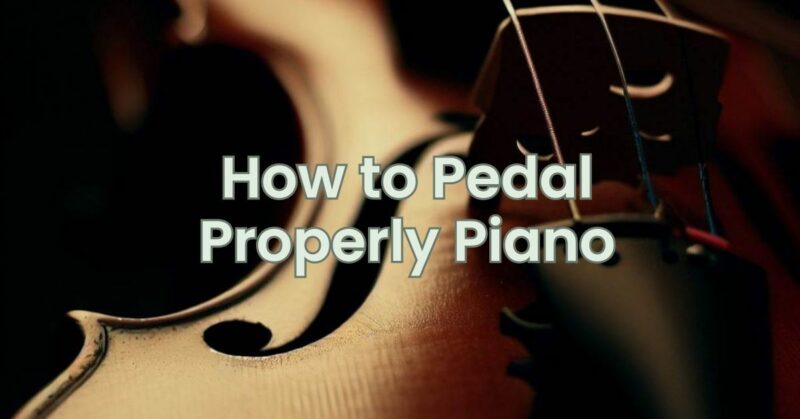The piano pedal is a fundamental tool that allows pianists to shape the sound, dynamics, and expressiveness of their playing. However, knowing how to pedal properly is essential to maintain clarity, control, and musicality. In this article, we will explore the techniques and principles of proper piano pedaling, offering valuable insights to pianists of all levels.
- Understand the Different Pedals: Most pianos feature three pedals: the sustain pedal (right pedal), the sostenuto pedal (middle pedal), and the soft pedal (left pedal). Each pedal has a specific function and effect on the sound produced. Familiarize yourself with the purpose and operation of each pedal to utilize them effectively in your playing.
- Listen and Observe: Developing a keen ear and attentive listening skills are essential for proper pedaling. Listen to the music you are playing and observe how the pedal affects the sound. Pay attention to the nuances and subtleties in dynamics and tone produced by different pedal techniques.
- Start with Basic Pedal Technique: Begin by mastering the basic pedaling technique: the legato pedal. This involves smoothly depressing and releasing the sustain pedal as the harmony changes. Practice pedaling along with simple melodies or exercises, focusing on achieving a seamless and connected sound.
- Half-Pedaling Technique: The half-pedaling technique is commonly used to create a more subtle and transparent sound. It involves partially depressing the sustain pedal to achieve a lighter resonance while still maintaining some clarity. Experiment with this technique to find the right balance between sustain and clarity in your playing.
- Syncing Pedaling with Musical Phrases: Pedaling should align with the musical phrasing and structure of the piece. Lift the pedal at the end of phrases or sections to create clean breaks and allow for clear articulation. Avoid excessive or continuous pedaling that may blur the musical lines.
- Pedaling in Chopin’s Music: Chopin’s compositions often require specific pedaling techniques to bring out their unique characteristics. Study the pedaling indications provided in the sheet music and experiment with different pedal techniques to achieve the desired musical effects.
- Experiment with Different Pedal Effects: Explore the various pedal effects, such as flutter pedal, resonance pedal, or selective pedal, depending on the musical style and context. These effects can add depth, color, and texture to your playing, enhancing the overall musical expression.
- Adapt to Different Genres and Styles: Pedaling techniques may vary depending on the musical genre or style you are playing. For example, in Baroque music, pedal usage is minimal or non-existent, while in Romantic or contemporary music, more liberal and expressive pedaling may be required. Adapt your pedaling approach accordingly.
- Practice Slowly and Gradually: When incorporating pedaling into your practice routine, start by practicing slowly and gradually increase the tempo. Focus on accuracy, clarity, and control before attempting faster passages. Develop muscle memory and coordination to ensure precise pedal execution.
- Seek Guidance and Experiment: Don’t hesitate to seek guidance from a piano teacher or experienced pianist to refine your pedaling technique. They can provide valuable insights, demonstrate proper pedaling, and guide you through challenging passages. Additionally, continue experimenting and exploring pedal techniques to develop your personal pedaling style.
Mastering proper piano pedaling technique is a lifelong pursuit for pianists. It requires attentive listening, careful observation, and dedicated practice. By understanding the purpose and effects of each pedal, practicing basic techniques, and adapting to different musical styles, you can unlock the expressive potential of the piano pedal. With patience, persistence, and guidance, you can refine your pedaling skills and elevate your piano playing to new heights of musicality and artistry.


